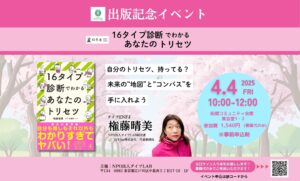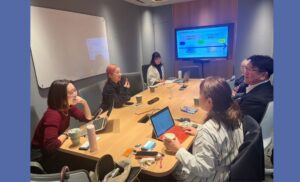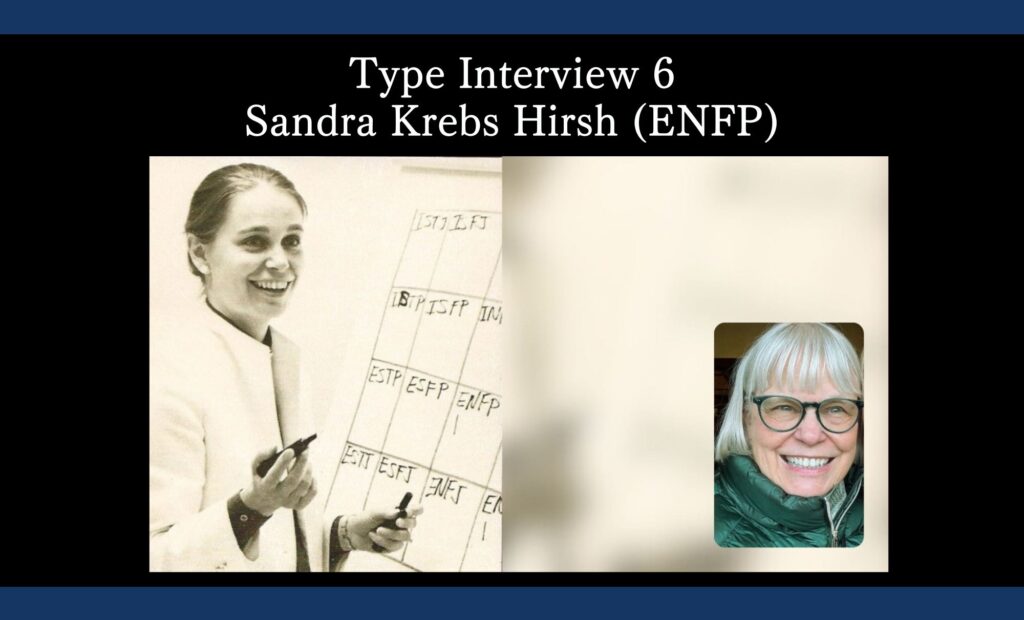
はるみ: あなたのストーリーを聞かせてください。
サンドラ: 私はペンシルベニア州で、STJの家族の中で育ちました。
家族の中に私のような人は誰もいませんでした。
兄弟や両親とはとても違うと感じていました。
母はESTJ、父はISTJ、兄はESTJ、姉はISTJでした。
そして、そんな中にポツンと私—ENFPの私がいたんです。
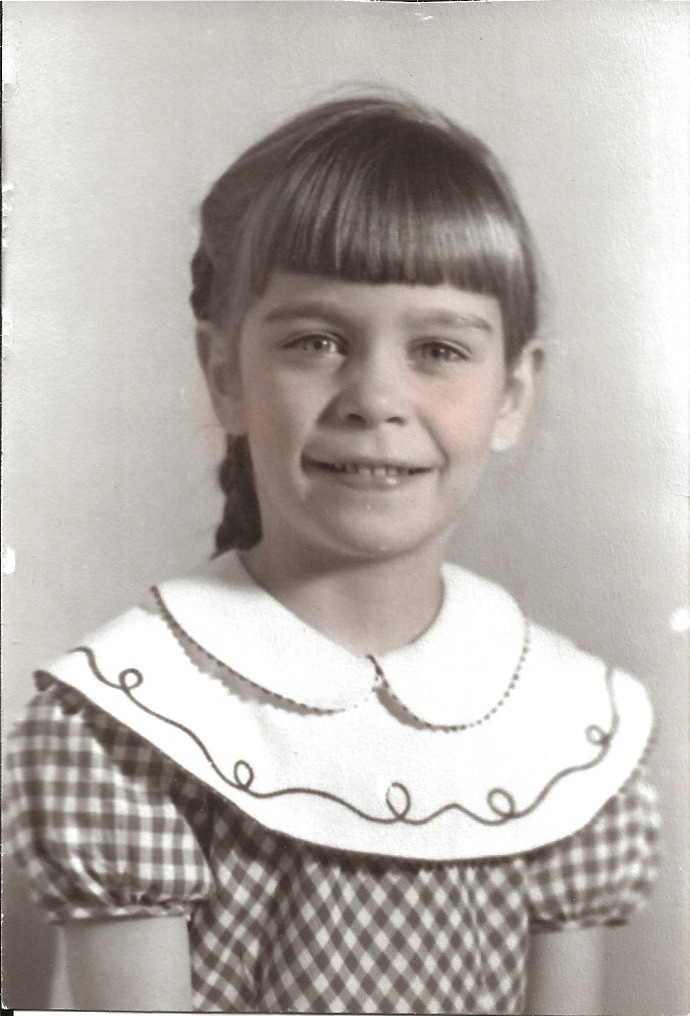
メアリー・マコーリーによると、イザベル・マイヤーズはよくこう言っていました。
「あなたがチャンネル4で話していて、相手がチャンネル5で聞いているなら、チャンネルを変えるべきなのはあなたの方よ。」
そして、私はSTJの家族の中で育ったので、自分とは異なる世界に適応しやすかったのだと思います。
私のキャリアのほとんどはTJの組織の中で過ごしました。
30歳のとき、私はミネソタ州に引っ越しました。
到着したときは、7歳、4歳、3歳の3人の子どもを育てる専業主婦でした。
地元の図書館で書評を書いたり、授業をしたりといったパートの仕事をしていました。
ミネソタでは知り合いが誰もおらず、長く住むつもりもありませんでした。
しかし、結果的にミネソタは私にとってとても良い場所になりました。
ミネソタ州のミネアポリスとセントポールのツインシティは、知的・学術的で、そして出版が盛んな地域です。
このツインシティには出版社がいくつもあります。
マイヤーズ・ブリッグスの心理測定ツールとしての研究や、性格タイプの統計的な検証など、初期の心理測定研究の多くはここミネソタで行われました。
1977年に私は離婚しました。
家族を養うために仕事を見つける必要がありました。
私はペンシルベニア大学で修士号を取得していましたが、それはアメリカ研究の学位であり、もっと具体的でビジネスに直結するものが必要でした。
そこで、ミネソタ大学に進み、産業関係学(現在でいう人事管理)の修士号を取得しました。
当時、ミネソタ大学の産業関係学を学んだ学生の80%は卒業前に就職が決まっていました。
このプログラムは統計の履修が多く、非常に厳しいものでした。
しかし、それはとても優れたプログラムで、私は多くの就職オファーを受け取りました。
しかし、法的な理由でミネソタに留まる必要がありました。
なぜなら、私は3人の子どもを育てており、彼らの父親がこの地にいたからです。
そこで私は、ミネソタ州セントポールにある私立女子大学、セント・キャサリン大学(当時はセント・キャサリン・カレッジ)で経営学部の上級生を教えることにしました。
私は経営学部の助教授として働いていました。
そこで初めてマイヤーズ・ブリッグス(MBTI)というものを知りました。
ジョセフ・オブ・カロンデレット修道会のシスターたちがMBTIを受けており、私にも試してみるよう勧めてくれたのです。この大学は、この修道会によって設立されました。
しかし、その時はMBTIにそれほど注意を払っていませんでした。
私は学生たちにビジネスの世界を紹介するため、企業のリーダーをクラスに招き、組織内でのキャリアの機会について話してもらっていました。そのうちの一人のビジネスマンが、私に自分の会社で働かないかと声をかけてくれました。そのことがきっかけで、企業でどのような仕事の選択肢があるのか調べることになりました。
そして、セント・キャサリン大学で教えるよりも、企業で働いたほうがはるかに多くの収入を得られることに気づきました。夜間に教えることも可能だったので、企業での仕事に挑戦することにしました。
その中で最も給与が良かったのがハネウェル社(Honeywell Inc.)で、私の自宅からわずか3~4マイルの距離にありました。その程度の通勤なら子どもたちの世話をしながら仕事を続けられると考え、ハネウェルの人事部で働くことを決めました。
ハネウェルでの仕事の一部は、科学者や技術者のキャリア開発を管理することでした。
そして、ハネウェルでENFPの自分の特性をどのように適応させるべきかを理解していました。なぜなら、工学分野におけるタイプの研究を行い、一緒に働く人々の多くが典型的にTJタイプであることが分かっていたからです。
ハネウェル社では、マイヤーズ・ブリッグス(MBTI)を含むいくつかの心理測定ツールの導入を始めたばかりでした。
はるみ: ハネウェルはなぜエンジニアにMBTIなどのツールを受けさせたのですか?生産性向上が目的だったのでしょうか?
サンドラ: それよりも、ハネウェルはエンジニアが会社を辞めて他の仕事に行くのを防ぎたかったのです。
エンジニアや科学者は、ハネウェルにとって最も高額な専門職の人材でした。
当時のアメリカでは、エンジニアや科学者の数が不足しており、彼らの給与は他の職種よりも高く設定されていました。
だからこそ、会社としては彼らを引き留め、離職を防ぎたかったのです。
彼らに満足してもらい、興味に沿った仕事を与えることで、会社に定着してもらうことが目的でした。
MBTIやその他の心理測定ツールは、採用のために使われたわけではありません。
これらのツールは、プロフェッショナルなキャリア開発のために活用されていました。
私は、NFタイプのエンジニアたちと出会うことがありました。
彼らは「数学も得意だし、工学や科学のスキルもあるけれど、何かが足りない気がする」と言うのです。
例えば、あるINFPのエンジニアは数学が得意でしたが、エンジニアとしての仕事が好きではありませんでした。
彼は演劇が大好きで、最終的にはツインシティの劇場で働くことになりました。
つまり、彼は単に幸せではなかったのです。
才能はありましたが、人生で別のことをしたいと考えていました。
そして、ハネウェルはそういう人たちがより自分に合った道を見つけることを許容していました。
人事部の私たちは、NやFの傾向を持つ人々が会社内でより適したポジションを見つけられるようサポートしていました。
私たちの人事部はとても良い部署だったと思います。
はるみ: つまり、エンジニアたちはいくつかの心理測定ツールを受けていたのですね?
サンドラ: そうです。ハネウェルの人事部のリーダーたちは、私にエンジニアや科学者を対象に調査を行い、どのツールが最も役に立っているのかを確認するよう求めました。
はるみ: そのプロセスはどのように進めたのですか?
サンドラ: まず、150人のエンジニアや科学者にインタビューを行い、その結果をもとにアンケートを作成しました。
そのアンケートは、さまざまな工学や科学の分野に属する1,000人のエンジニアに配布されました。
その結果、MBTIはユングの理論が予測していた通りの働きをしていることが分かりました。
私は大学院生を雇い、彼女のインターンシップと博士論文のテーマとして「MBTIのようなツールがエンジニアや科学者にどの程度有効か」を研究してもらいました。その研究が、ある意味でMBTIの理論の有効性を証明することになりました。
また、エンジニアたちに「キャリアの中で最も役に立ち、役立ったと思うツールは何か」と質問しました。
その結果、マイヤーズ・ブリッグス(MBTI)が第1位 となりました。
そして、私の上司のさらに上の上司もこの結果に満足していました。なぜなら、MBTIは当時使用していた他の心理測定ツールの中で最もコストが低かったからです!
この研究結果を受けて、私はハネウェルのすべての人材開発担当者にMBTIの研修を実施する よう求められました。
ハネウェルには45の事業部があり、それぞれに最低1人の人事担当者がいました。私は、その全員にMBTIの使い方を教えることになったのです。
こうして、私はMBTIを本格的に活用し始め、タイプ論に深く関わるようになりました。
MBTIについての知識を徹底的に身につけ、MBTIマニュアルを読み込み、学会に参加する などして、専門的に学び続けました。
はるみ: MBTIや企業での経験から得た学びは何ですか?
サンドラ: 一番の学びは、タイプには高い妥当性があるということですね。
ワークショップに25人のエンジニアが参加すると、それぞれの性格タイプに合った専門分野を自然と選んでいることがとても興味深かったです。
例えば、品質管理エンジニアやテストエンジニアにはセンサー(S)の人が多く見られました。
一方で、電気エンジニア、設計エンジニア、製品開発のエンジニアには直観型(N)の人が多い傾向がありました。
また、別の仕事で建築家と関わる機会がありました。
商業ビル、工場、プラントの設計をしている建築家のほとんどは思考型(T)でした。
一方で、学校、教会、病院の設計をしている建築家は、感情型(F)が多い傾向がありました。
そして、タイプについてもう一つ特に印象的だったのは、あらゆる場面でタイプのパターンが見えてくることです。
ハネウェルはMBTIやタイプに関する最新の情報を常に取り入れようとしていました。
そのため、私はイザベル・マイヤーズの右腕だったメアリー・マコーリー博士を雇うことができました。
メアリー・マコーリーとはとても親しくなり、彼女はハネウェルに来て数日間にわたって私と一緒にタイプについて教えてくれました。
ハネウェルは、私がメアリーを雇い、MBTIの解釈を担当する社内の人々とともに学べるように資金を出してくれました。
そのおかげで、私はイザベル・ブリッグス・マイヤーズとともにMBTIマニュアルを執筆した人物から直接指導を受けるという、非常に恵まれた環境にいました。
メアリー・マコーリーは、MBTIの研修プログラムを設計しており、その内容は事前課題があり、4日間にわたるものでした。
私は彼女と共同で教え、コースの最初にMBTIの基礎、歴史、理論について説明しました。
当時はまだ、MBTIの資格認定や認証プログラムは存在していませんでした。
メアリーと私は、MBTIの歴史、理論、統計的な裏付け、妥当性や信頼性について、4日間にわたり講義を行いました。
また、解釈の実践セッションも含まれていました。
はるみ: メアリー・マコーリーの名前は、私が行うほとんどのインタビューに出てきます。彼女はどんな人でしたか?
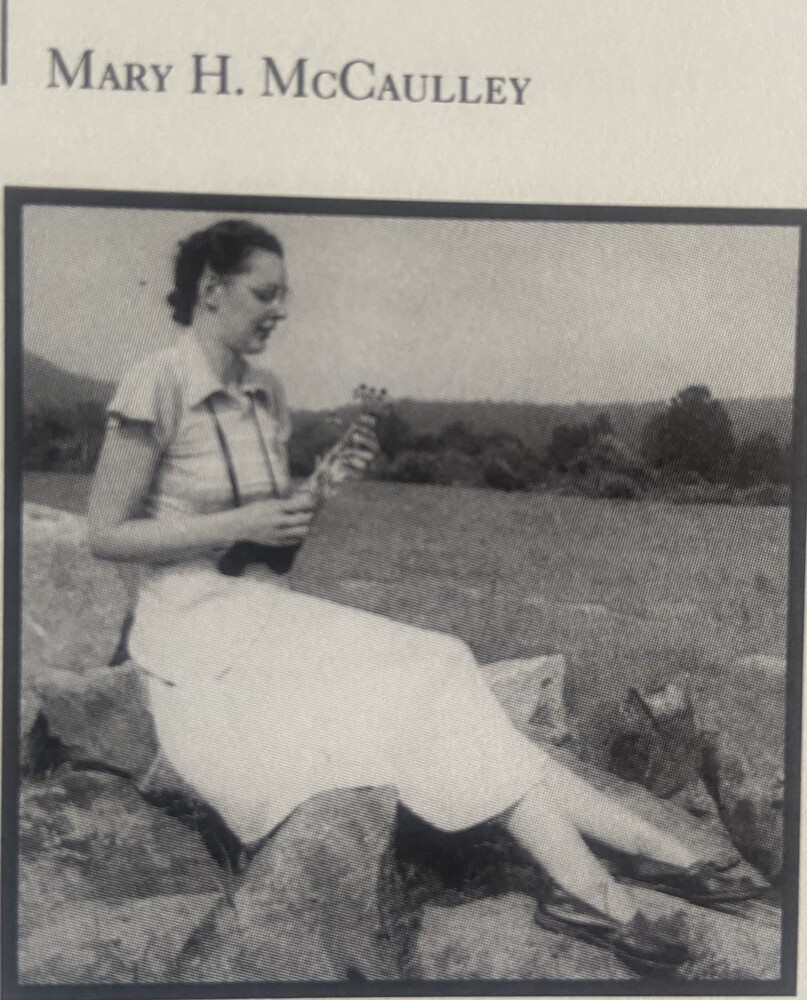
サンドラ: 彼女はとても思いやりのある人でした。
そして、イザベル・ブリッグス・マイヤーズのことをとても大切に思っていました。
二人の関係は、姉妹のようでもあり、学問的なパートナーのようでもありました。
彼女たちは、タイプ論がどのように見られるべきか、どのように教え、どのように活用されるべきかについて、非常に深くつながり合っていました。
そして、タイプを倫理的に扱うことを強く望んでいました。
そのため、タイプの構造を常に研究し、検証し続ける必要がありました。私たちが提供する情報が、妥当性のある確かなものになるようにしたかったのです。
倫理的な観点からも、MBTIは単なる遊びのように扱うものではありません。
イザベル・マイヤーズとメアリー・マコーリーは、MBTIが何であるべきか、そしてどのように活用されるべきかについて、精神的にも知的にも完全に一致していました。
二人とも、自分のタイプはINFPだと言っていました。
はるみ: まるで、二人が同じビジョンを見ていたような感じですか?
サンドラ: そうですね、その通りだと思います。
イザベル・マイヤーズが明らかに中心人物ではありましたが、メアリーは彼女の仕事を大きく支え、マイヤーズが取り組んでいたことを整理し、形にする手助けをしていました。
また、メアリーはフロリダ大学の正教授でもありました。
その学術的な肩書きが、マイヤーズの研究に正当性を持たせる上で重要な役割を果たしていました。
それに、彼女はとてもユーモアのある人でした。彼女は背が高く、細身でした。
ミネソタに来たときや、私がフロリダを訪れたとき、夜は自由な時間があったので、彼女はよく「ショッピングに連れて行って」と頼んできました。
そして、背の高い女性向けの服を売っている店を巡ったんです。
そのうちの一つに「Tall Gal Shop(トール・ギャル・ショップ)」という店があって、大人の女性向けの店にしてはちょっと面白い名前だと、二人でよく笑っていました。
はるみ: あなたも背が高いんですか?
サンドラ: いいえ、私はそうではありません。
メアリー・マコーリーはとても寛大で優しく、まさにINFPの特徴そのものでした。
彼女は常に、タイプを倫理的に使用するためのデータと研究を求めていました。
そして、研究資金を調達できないかと、よく私に尋ねていました。
もちろん、穏やかに頼んでくるんですが、その点にはとてもこだわりがありました。
彼女は完璧主義者だったので、タイプのテーブルや研究で裏付けられていないことは決して口にしませんでした。
そして、彼女は私を温かく迎え入れ、面倒を見てくれました。
ホリデーシーズンには、心のこもった素敵な手紙を送ってくれました。
彼女は特別な存在でした。
時には頑固な一面もありましたが、それはタイプが正しく使われることを何よりも大切にしていたからです。
彼女には子どもがいませんでしたが、その代わりに私たちをよく指導し、育ててくれました。
タイプコミュニティの中には、「あなたは博士号を持っていないのに、どうしてこの仕事をしているの?」とか「タイプに関する仕事は博士号を持った人がやるべきだ」と言ってくる人もいました。
そんな時、私は「私はMBTIに深く関わった二番目の人物であるメアリー・マコーリーから直接指導を受けました」と答えていました。
メアリーは一度も私の能力を疑ったことはありませんでした。
彼女はただ、背が高く、細身で、優しく、親切で、気さくな人でした。そして、タイプコミュニティに多くの貢献をした人でした。
はるみ: イザベル・マイヤーズに会ったことはありますか?
サンドラ: いいえ、一度もありませんでした。
カリフォルニアで開催された最初のAPT(Association for Psychological Type:心理タイプ協会)カンファレンスで、彼女に会える機会がほぼあったんです。
当時、ハネウェルの本社人事部が部門のチームビルディングを計画していて、直前になって日程が変更され、それがAPTカンファレンスと重なってしまいました。
私はチームビルディングを欠席するわけにはいかなかったので、APTカンファレンスには行けませんでした。
そのカンファレンスにはイザベル・マイヤーズが参加していました。
もし行けていたら、彼女に会えていたはずです。
それが叶わなかったことは今でも心残りです。本当に彼女と直接話す機会があればよかったのにと思っています。
はるみ: なぜ彼女に会いたかったのですか?
サンドラ: それは、彼女が他の人なら諦めてしまうようなことにも粘り強く取り組んだ人だからです。
彼女には夢があり、それを実現するために努力しました。
そして、その夢を形にすることができたのです。
私は彼女に会ったことはありませんが、心から会いたかったと思っています。
彼女はとても粘り強い人だったと思います。
諦めない姿勢を貫いた人でした。それが私にはとても刺激になりました。
なぜなら、彼女も私と同じで、心理学の博士号を持っていなかったのに、それでもMBTIを開発し続けたからです。
私はMBTIを使う立場でしたが、彼女はそれを作り上げる立場でした。
イザベルは女性でしたし、1970年代当時、女性が認められるにはとても苦労が必要でした。
企業の世界では、女性は本当に少数派でした。
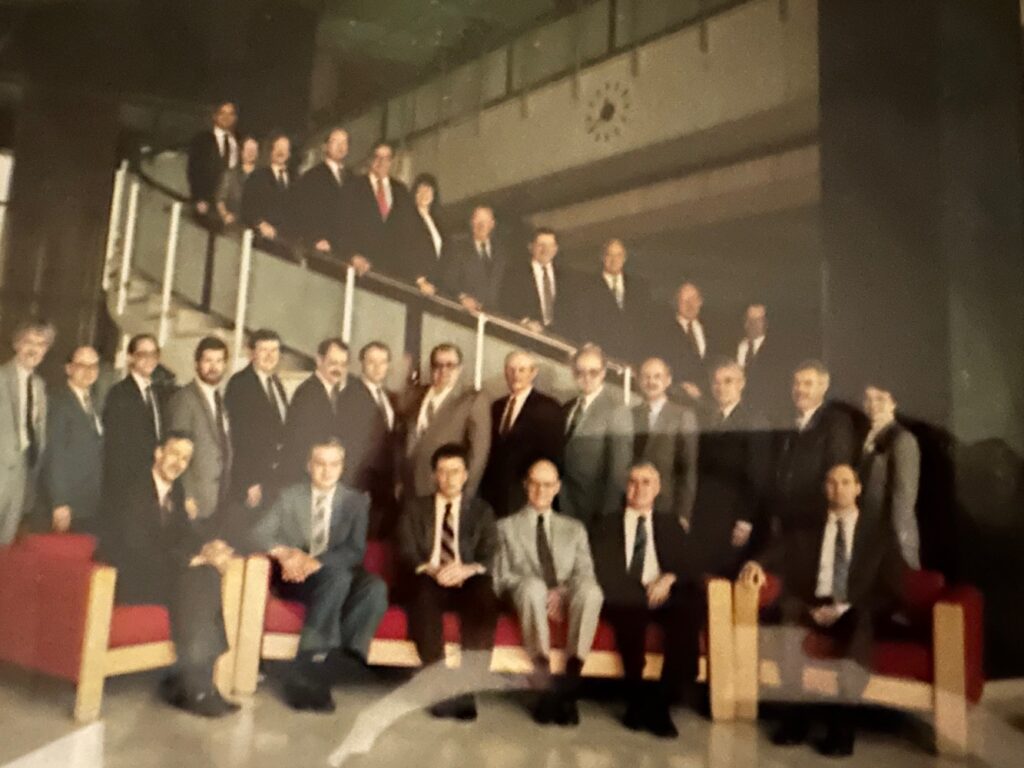
当時、このような仕事に従事する女性は非常に少なかったです。
そして、エンジニアは最も扱いが難しい人々の一部でした。
彼らは一般的に、いわゆる「感傷的なこと」を好まない傾向があり、そのためMBTIを活用するのは必ずしも容易ではありませんでした。
はるみ: イザベル・マイヤーズについてお話しされるとき、私はカール・ユングに会いたかったという気持ちを思い出します。
彼に会えなかったこと、そして生涯で彼に会うことができないことを後悔しています。もし彼に会えていたら、彼は私に何と言ってくれたのでしょうか。
サンドラ: ええ、そのお気持ちは理解できます。
私も、イザベル・マイヤーズが「あなたはよくやりました」と言ってくれることを望んでいました。
はるみ: お子さんについて教えてください。娘さんが3人いらっしゃるのですね。
サンドラ: 娘が2人と息子が1人います。
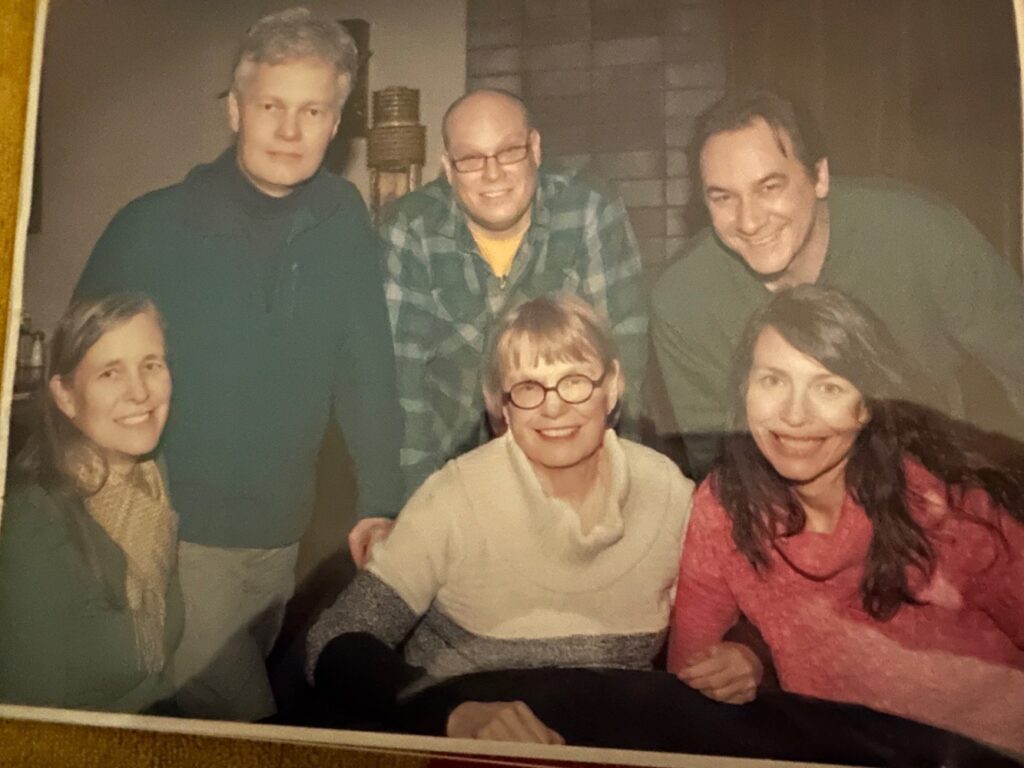
はるみ: では、若い女性たちと一緒にいるあなたを見かけて、皆さんが娘さんだと思ったのかもしれませんね。
サンドラ: まあ、なんて素敵なことをおっしゃるの。
あなたのおかげで、今日はとても良い気分になりました。
はるみ: お子さんたちと一緒にタイプ論を学ぶのは、とても楽しそうですね。
サンドラ: そうですね。
私の子どもたちは、常に私の仕事に何らかの形で関わっていました。
最初はそれほど興味を示していませんでしたが、娘のキャサリンが大学生になった頃、タイプ論に非常に興味を持ち始めました。
そして、次女のエリザベスも同様に興味を持つようになりました。
息子はあまり興味を示していませんが、彼はISFJです。
エリザベスはINFP、キャサリンはINTPです。
娘たちとは、いくつかの本を共著しました。
最初に『Introduction to MBTI and Teams』を改訂し、その後『MBTI Team building Program: Leaders Resource』を再構築しました。
その後、娘たちは『MBTI and Decision Making』や『Building Your Career Transition Strategy』など、タイプに関連する他の本も執筆しました。
彼女たちは現在もタイプについて執筆を続けています。
私はまた、米国人材開発協会(ASTD、現在のATD)の活動にも関わり、全国キャリア開発専門実践分野の理事を務めました。
毎年、彼らはカンファレンスを開催しています。
私は、ハネウェルで科学者やエンジニアと共にMBTIをどのように活用しているかについてのワークショップを提案しました。
ワークショップでは、ハネウェルのエンジニアのタイプと、イザベル・マイヤーズの著書『Gifts Differing』に掲載されているタイプ表を比較しました。
私のハネウェルでのデータは、イザベル・ブリッグス・マイヤーズのデータと非常に類似していました。
『Gifts Differing』の出版社に連絡し、ASTDでのワークショップでマイヤーズのエンジニアリングタイプ表を使用しても良いか尋ねました。
企業の世界でMBTIをどのように活用しているかに人々が非常に興味を持っていたため、ASTDでのワークショップは立ち見が出るほどの盛況でした。
ハネウェルのエンジニアたちのデータは、イザベルの本のデータと一致していました。
はるみ: その時のコンサルティング・サイコロジスト・プレス(Consulting Psychologist Press)の社長は、ENFJのロリン・ルテンドル氏だったのですね。
彼はMBTIや『Gifts Differing』の出版社でもありました。
ロリンはカンファレンスの聴衆の中にいて、ワークショップが終わった後、私のところに来て、「素晴らしい内容でした。ビジネスや組織で使えるMBTIの資料が必要です。あなたに本を書いてもらえませんか?」と言いました。
さらに、彼はすでにキャシー・マイヤーズ、つまりイザベル・ブリッグス・マイヤーズの義理の娘であり、当時MBTIの著作権の共同所有者だったキャシーに私のことを確認済みだと伝えました。
私はアメリカ心理タイプ協会(American Association for Psychological Type)でのボランティア活動を通じてキャシー・マイヤーズと知り合っていました。
また、ロリンは私がツインシティーズ心理タイプ協会(Twin Cities Association for Psychological Type)でボランティアをしていることも知っていました。
1983年当時、タイプ論をビジネスや組織、企業で活用するための書籍は存在しませんでした。
タイプ論や関連資料は、主に個人カウンセリング、結婚カウンセリング、キャリアカウンセリングなど、さまざまなカウンセリングやセラピーのために出版されていました。
私はロリンに、イザベル・マイヤーズの著書を使って企業の従業員にタイプを理解してもらおうとしていましたが、彼女はINFPであり、リーダーシップなどのビジネス関連のトピックには触れていなかったため、主にNTやSTタイプのエンジニアや科学者には適していないと伝えました。
すると、ロリンは「では、彼らはどのようなものを好むと思いますか?」と尋ねてきました。
私は「箇条書きや短い文章が好まれると思います」と答えました。そこで、私は『Introduction to Type in Organizations』の執筆を開始し、ESTJの企業派遣心理士であるジーン・クメロウに共著を依頼しました。
この書籍は、16のタイプをビジネスの視点から説明し、ストレス時の行動、対処行動、リーダーシップスタイル、潜在的な落とし穴などを特定しています。
それまで、ジーンと私が『Introduction to Type in Organizations』を書くまでは、タイプに関するフィードバックを迅速かつ容易に提供する方法はありませんでした。
それ以前は、企業の人事担当者として、ワークショップの参加者にゴードン・ローレンスの『People Types and Tiger Stripes』を配布していました。
しかし、この本は教育者や子供向けに書かれており、私が関わっていたビジネスパーソン、エンジニア、科学者といったビジネスグループには適していませんでした。
ジーン・クメロウとの共同作業により、この本は「的を射た」ものとなりました。
この小冊子は26の異なる言語で販売され、数百万部を売り上げています。
はるみ: 印象的な喜びの瞬間はありましたか?
サンドラ: MBTIの解釈を受けた後、人々が気分を良くする様子が大好きでした。
以前述べたように、他の評価ツールやテスト、インベントリを使用すると、結果によって人々が自信を失うことがありました。
感情型の私にとって、それは嫌なことでした。評価ツールのせいで人々が不十分だと感じるのは嫌でした。
はるみ: これらのインタビューを行っている理由は、パーソナリティタイプの普及に貢献した人々の歴史を記録するためです。
もう一つの理由は、歴史を理解し、改善点を見つけるためです。
現在のタイププラクティショナーの世界に対して、どのようなアドバイスをお持ちですか?
サンドラ: 準備をしっかりと整えてください。自分が話している内容をよく理解している必要があります。多くの例を用意し、楽しんで取り組んでください。驚くべきことがたくさん起こり得ます。また、ボランティア活動を行い、学んでいることを他の人と共有するように伝えています。
はるみ: ボランティア活動の力とは何でしょうか?
サンドラ: 私はボランティア活動を通じて非常に多くのことを学びました。
ボランティアは、私の実践を広げるのに役立ち、長年にわたって私を助けてくれました。
私は非常に忙しく働いていましたが、それは誰かが誰かを知っているというような、ボランティア活動の一部であるネットワーキングのおかげでした。
特にアメリカでは、全国的な委員会や理事会でボランティアをすると、あなたの名前が潜在的なクライアントに知られるようになります。
ボランティアをすると多くのことを学べると感じています。これはおそらくポリアンナ的に聞こえるかもしれませんが、私は多くのことを他人の役に立つと考えて行っています。
それは私の感情型の性格によるものです。
誰かが助けを必要としていて、私がそれを手助けできるならば。
取材・文 権藤晴美
※インタビューオリジナル全文※
Harumi: Tell me your story.
Sandra: I grew up in the state of Pennsylvania in an STJ family. I didn't have anybody like me in my family. I felt very different than my siblings and my parents. My mom was ESTJ, my dad was ISTJ, my brother was ESTJ, and my sister was ISTJ. And I just plopped there in the middle of all this, I was an ENFP.
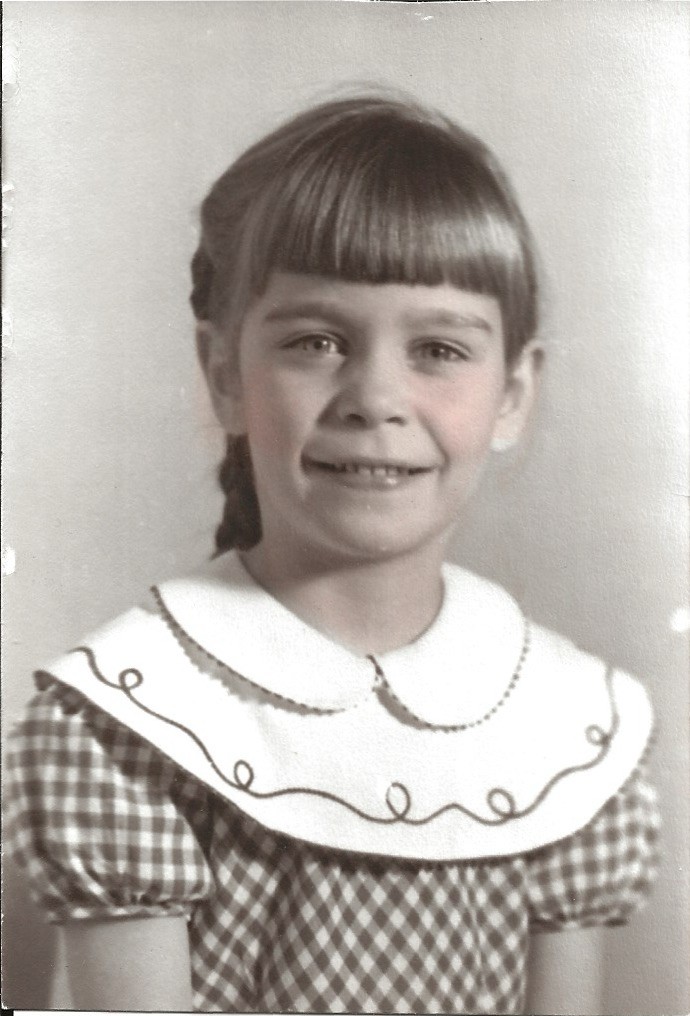
According to Mary McCaulley, Isabel Myers used to say, “if you're communicating on Channel 4 and they listen on Channel 5, you are the one who needs to change the Channel.” And because I grew up in an STJ family I could adapt easier to a world different from me. Most of my career was spent in TJ organizations.
At 30, I moved to Minnesota. I came and I was a stay-at-home mother of three children who were 7, 4 and 3 years old. I was doing part-time work writing book reviews and giving classes for the local library. I didn't know anyone here in Minnesota and didn't think I would be here long. But Minnesota been a very good place for me.
The Twin Cities of Minneapolis and St. Paul in Minnesota are a vibrant intellectual, academic, and book community. We have several publishers here in the Twin Cities. A lot of the early psychometric work that was done on Myers-Briggs as a psychological instrument, on statistical validation on personality types, was done here in Minnesota.
In 1977 I got divorced. I needed to get a job to take care of my family. I had a master's degree from the University of Pennsylvania, but it was in American Studies, and I needed to have something more concrete, more businesslike.
So, I went to the University of Minnesota and got a second master's degree in Industrial Relations which is now called Human Resources. At that time, 80% of people who studied Industrial Relations at the University of Minnesota, were hired before they graduated. The IR program demanded a lot of course work in statistics.
The was a very good program from which to graduate and I received a lot of job offers. But legally, I had to stay in Minnesota because I had three children and their dad was here.
So, I decided to teach the upper-level students in the business administration department of a private women's college, College of St. Catherine now known as the University of St. Catherine in St. Paul, Minnesota.
I was an assistant professor in the business administration department. And that was where I first heard of the Myers-Briggs because some of the nuns from the Order of the Sisters of St. Joseph of Carondelet had taken the instrument and offered to let me try it out. The University of St. Catherine was founded by this religious order of nuns.
I didn’t really didn't pay much attention to the MBTI at that time.
To introduce my students to the world of business I invited business leaders to my class to talk to my students about opportunities in their organizations. And one of the businessmen offered me a job in their organization. That led me to check out what other jobs in the corporate world would be available to me.
I realized I could make a lot more money working in the industry than teaching at St. Catherine’s. I could still teach at night if I wanted to, so I decided to interview for corporate jobs.
Honeywell Incorporated (Inc.) paid the best, and it was located about three or four miles from my home. I could easily manage my children with that kind of commute, so I decided to go to work in Human Resources at Honeywell.
Part of my work at Honeywell was managing the career development of scientists and engineers.
And I knew what I needed to do to adapt my ENFP preferences at Honeywell because I studied types in engineering and found that the people I would work with are typically more TJ.
Honeywell, Inc. had also just started using the Myers-Briggs along with a few other instruments.
Harumi: Why did Honeywell want their engineers to take the instruments? Did they want to improve productivity?
Sandra: It was more Honeywell wanted to keep our engineers from pursuing opportunities outside of Honeywell. Engineers and scientists were the most expensive professional resources at Honeywell. We paid more money to the engineers and scientists, because these occupations were in scarce supply at that time in the USA. Plus, we wanted to retain the engineers and scientists that we had. We did not want them to leave the company.
We wanted to keep them happy, and we wanted to orient them to their work according to their interests.
We didn't use the MBTI or the other psychological instruments for selection or anything like that. The MBTI was used for professional career development.
I met NF engineers who said, “Well, I'm really good at math and I'm good at engineering and science, but there's something missing.”
I remember an engineer who was an INFP and was good at math. But he didn't like the work of engineering. He loved theater and he ended up working for a theater here in the Twin Cities.
I mean, he just wasn't happy. He was very talented, but he wanted to do something else with his life. And Honeywell was okay if I worked with people who felt they would be better working somewhere else. Most of the time we in Human Resources were able to find a better fit inside the corporation for those with preferences like N or F.
I think we had a good HR department.
Harumi: So, you worked with engineers who took a number of instruments.
Sandra: Yes, the HR Leadership of Honeywell wanted me to survey the engineers and scientists to see which of the different instruments that we used were the most helpful to them.
Harumi: How did you go about the process?
Sandra: We interviewed 150 engineers and scientists and created a questionnaire that went out to 1,000 engineers in various engineering and science disciplines.
I found that the MBTI was working in the way that Jung’s theory predicted. I hired a graduate student who did her internship and Ph.D dissertation on the efficacy of using instruments like the MBTI with engineers and scientists that sort of proved the theory.
And we asked them about which instrument was the most helpful and useful to them in their careers.
And the Myers-Briggs came out number one.
And my boss's boss was happy about that because the Myers-Briggs was also the cheapest of all the instruments we were using! Because of the findings of our study, I was asked to train all the human resource development people on the Myers-Briggs.
Honeywell had 45 divisions, and each division had at least one human resource person. So, I was to train all of them in the use of the Myers-Briggs.
Once I started using the instrument at Honeywell I got really involved with type.
I backgrounded myself in the MBTI, I studied the MBTI Manuals, I went to conferences.
Harumi: What are your takeaways from your experience working with MBTI and with the corporate world?
Sandra: I guess it would be that there was a lot of validity to type.
I'd have 25 engineers in a workshop, and it was interesting to see how people would naturally self-select the engineering specialty that fit their personality type.
For example, there were many quality engineers or test engineers that were Sensors.
The electrical engineers, design engineers, and engineers in product development were more likely to come out as Intuitives.
I had another assignment to work with architects. These architects who were working on commercial buildings and plants and factories were almost all Thinking types. The architects working on the schools and churches and hospitals were often Feeling types.
But I think another thing in terms of type that I feel particularly good about is seeing type patterns everywhere.
Honeywell wanted to have the very latest information on type and on the MBTI instrument, so I was able to hire Mary McCaulley Ph.D., who was the right-hand person for Isabel Myers.
Mary McCaulley and I became quite close because she would come to Honeywell and spent days with me teaching type.
Honeywell gave me money to hire Mary to teach me and the people in the corporation who were going to be interpreting the Myers-Briggs on how to do it. So, I was lucky in that I was trained by the person who co-wrote the MBTI Manual with Isabel Briggs Myers.
Mary McCaulley had designed an MBTI training program that had pre-work and was four days in length. I co-taught with her and we'd start the course with the very basics, the history and the theory of the Myers-Briggs. There was no qualifying or certification program at that time. Mary and I would present four days’ worth of information about the history, the theory, the statistics, the validity, and the reliability of the MBTI. There were also practice interpretation sessions.
Harumi: Mary McCaulley shows up in almost all the interviews that I do. What kind of a person was she?
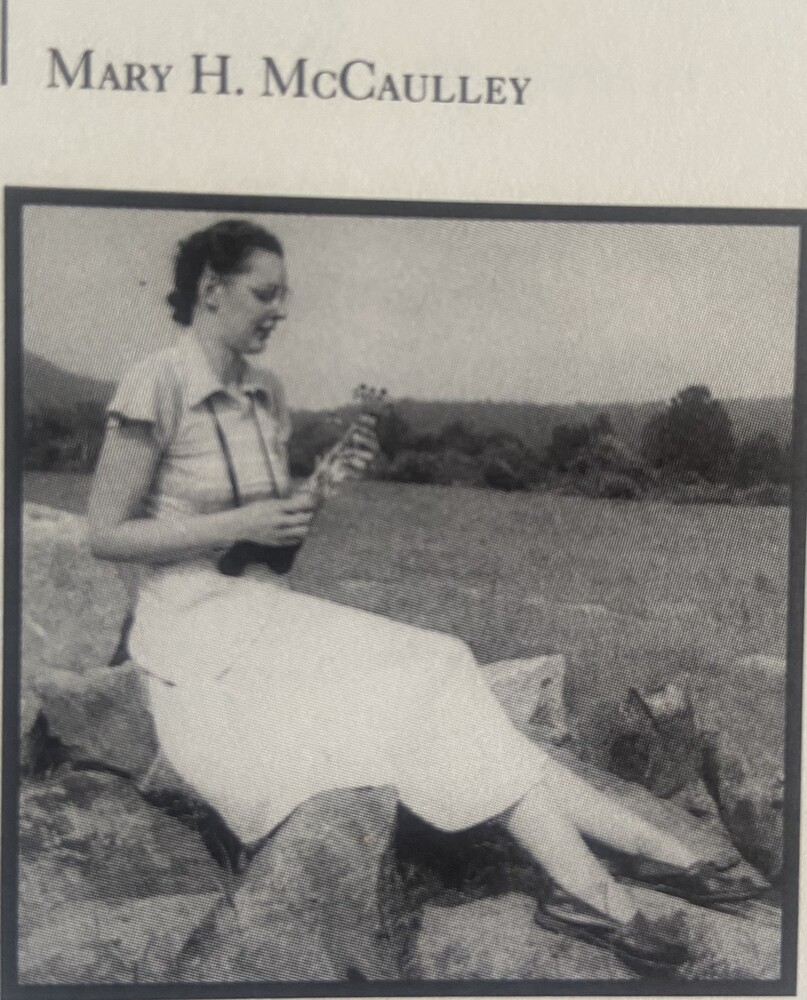
Sandra: She was a very caring person. And she loved and was very attached to Isabel Briggs Myers.
They had a sisterly and a scholarly relationship.
I think they were very connected and very in tune with how they wanted type to be viewed, how they wanted type taught and used in the world. They both wanted type to be used ethically so this entailed a constant need to research and validate type constructs to make sure that what we said was on solid ground validity-wise.
In terms of the ethics, you don't just give the Myers-Briggs like it’s a parlor game.
I think they (Isabel Myers and Mary McCaulley) were mentally and intellectually in sync with each other about what they thought the MBTI should be and do. They both claimed INFP as their type.
Harumi: Is it kind of like they were looking at the same vision together?
Sandra: I think so, yeah.
And Isabel Myers was clearly the key person in the hierarchy, but Mary facilitated so much for her and would take things that Isabel Myers was working on and help her work things out.
Mary was also a fully tenured professor at the University of Florida and so she had the credentials that Isabel Myers needed to bring legitimacy to Myers’ work.
And she was funny. I mean, she was tall and skinny.
When she would come here to Minnesota and when I visited her in Florida, we would have the evenings free, and she'd ask me to take her shopping. And we'd go to these shops that sold clothing for tall women, one was called the Tall Gal Shop, and we used to laugh about that name being used for grown women.
Harumi: Are you also a tall gal?
Sandra: No, I'm not.
Mary McCaulley was generous and kind and quite true to the INFP description. She really wanted data and research to support the ethical use of type. And she was always asking if I could find money to fund research.
I mean, in a nice way. She was very adamant about that. She was a perfectionist, so she wouldn't say anything that she couldn't back up with a study of type tables or research.
And she took me under her wing. She wrote me beautiful notes at holiday time.
She was a special person. Stubborn at times, because she wanted the use of type to be a certain way. She had no children, and she encouraged, mentored and taught us well.
Unlike some of the people in the type community who would say to me, “Well, you don't have a PhD.” And “How come you're doing this work. This type work should be done by those with PhDs?” My response would be, “Well, I've been trained by the second person to really work with the Myers-Briggs Mary McCaulley.”
Mary never questioned my abilities. She was just a tall, thin, nice, kind person, who was also easygoing. She gave a lot to the type community.
Harumi: Did you ever meet Isabel Myers?
Sandra: No, I never did.
I almost had the chance to meet her at the very first APT conference in California.
Honeywell's Corporate HR group was doing a departmental team building and at the last minute, the date was changed, and it conflicted with the APT Conference. I couldn't miss the team building. So, I wasn’t able go to the APT conference. Isabel Myers was there at the conference.
I would have met Isabel Myers at that conference. I always regretted that I did not get to go. And I just really wish I had had the opportunity to know her.
Harumi: May I ask why you wanted to know her?
Sandra: Well, because I think Isabel Myers persisted when other people might have given up.
She had a dream, and she worked at it. You know, she brought it to fruition. And I didn't know her, but I really wish I would have.
I think she was dogged, you know, like tenacious. And it was inspiring to me, because she was like me and she didn’t have a PhD in psychology, but she persisted. Myers was developing the MBTI, and I was using it.
Isabel was a woman and back in those days, in the 70s, women had to work hard to be heard and to be taken seriously. We, women were really a minority in the corporate world.

There were very few women doing this kind of work. And engineers are some of the toughest people to work with. Engineers and scientists typically don't like what they call touchy-feely things and so working with the MBTI was not always easy.
Harumi: When you're talking about Isabel Myers, it reminds me of how I really wish that I met Carl Jung. It's one of my regrets that I never met him and that I'm not going to ever be able to meet him during my lifetime.
I wonder if I had met him, what would he have said to me?
Sandra: Yes, I understand. And I hoped that Isabel Myers would say, “You did good.”
Harumi: Tell me about your kids. You have three daughters.
Sandra: I have two daughters and one son.
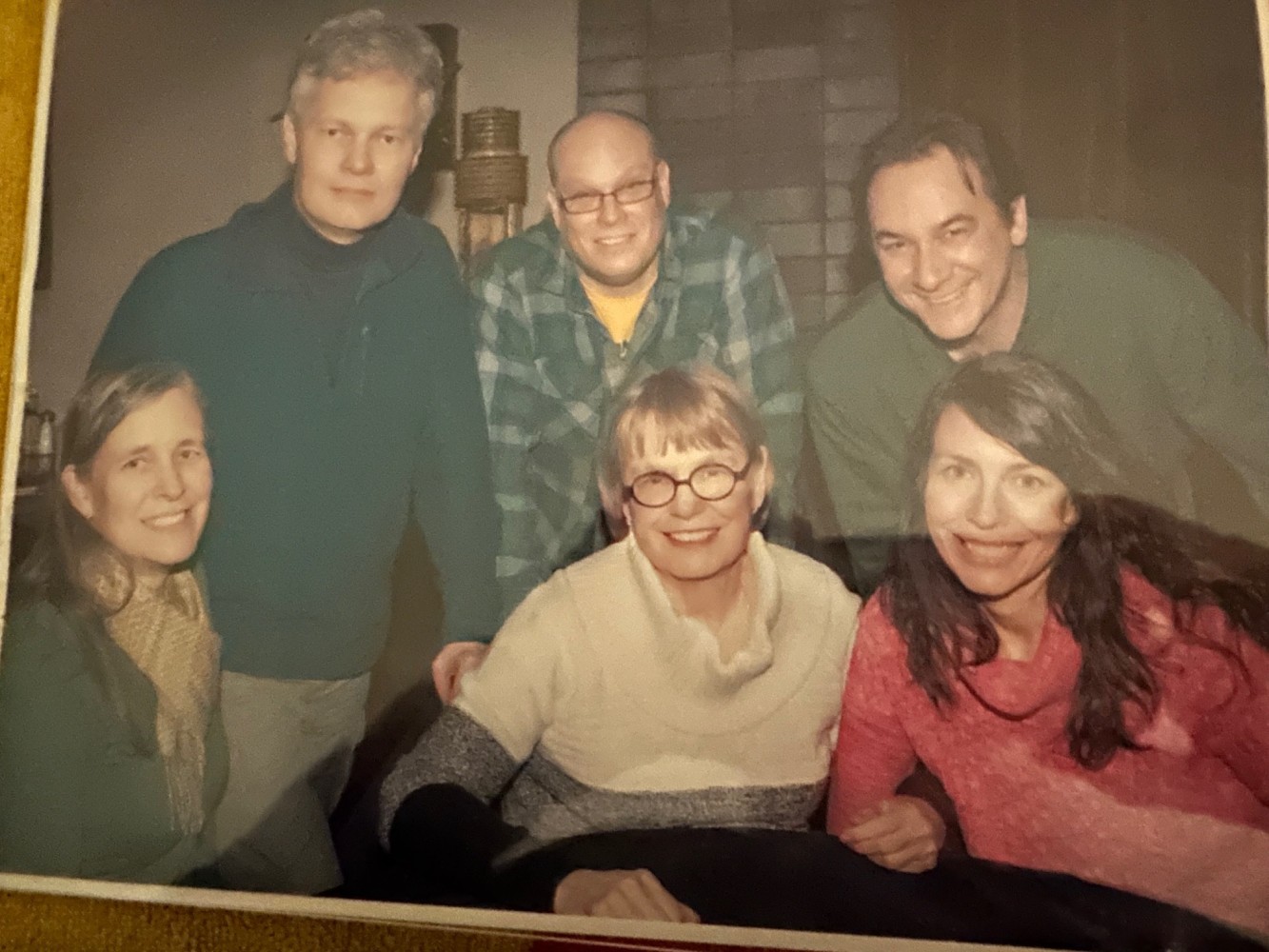
Harumi: Okay, then I must have seen you with younger women, and I thought you were all daughters.
Sandra: Oh, how nice. You just made my day.
Harumi: That sounds so fun to do type with your kids.
Sandra: Well, my kids were always kind of involved with what I was doing.
Initially, my kids didn't want to be that involved. But then my daughter Katherine was in college, and she started getting really interested in type, and then Elizabeth, my younger daughter did as well. My son is less interested. He's an ISFJ.
Elizabeth's an INFP, and Katherine's an INTP.
I also wrote several books with my daughters. We first revised, Introduction to MBTI and Teams and then we reworked MBTI Teambuilding Program: Leaders Resource.
Then my daughters wrote other type-related books such as MBTI and Decision Making and Building Your Career Transition Strategy. They are still writing about type today.
I was also involved with the American Society for Training and Development (now called the Association for Talent Development or ATD) and was on the board of their national career development professional practice area. They have a conference every year.
I put in a proposal to do a workshop on what I was learning about the Myers-Briggs and how we were using it at Honeywell with scientists and engineers.
In my workshop I compared the types of the engineers that I was working with at Honeywell with the published type tables in Isabel Myers’ book Gifts Differing. My Honeywell data was very similar to Isabel Briggs Myers’ data. I called the publisher of Gifts Differing and asked them if I could use the Myers’ engineering type tables that were in Gifts Differing in my workshop at ASTD. The workshop at ASTD was standing room only because people were so interested in what we were doing with the MBTI in the corporate world of work. The data that I found with the engineers at Honeywell mirrored the data in Isabel’s’ book.
Lorin Letendre (ENFJ) was the president at that time of Consulting Psychologist Press, the publisher of the MBTI and Gifts Differing. Lorin was in the conference audience. And after the workshop was over Lorin came up to me and said, “Wow, that was interesting. We need to have some MBTI materials available for people in businesses and organizations. Could you write a book for me?”
Further, he told me that he already vetted me with Kathy Myers, Isabel Briggs Myers’ daughter-in-law and at that time the co-owner of the copyright for the MBTI. I had gotten to know Kathy Myers through my volunteer work with the American Association for Psychological Type. Lorin also knew that I was volunteering with the Twin Cities Association for Psychological Type.
At that point in time (1983) there were no books written expressly for people to use with type in businesses, organizations and corporations. Type and type-related materials were pretty much published for people to use in one-to-one counseling, marriage counseling, career counseling - different kinds of counseling and therapy.
I told Lorin that we were using Isabel Myers’ book to help corporate employees understand type but since it was written by an INFP and didn’t touch on business topics like leadership it wasn’t a good fit for engineers and scientists who seemed to be primarily NT or ST types.
So, Lorin asked me, “well, what would they like?”
And I said, “I think they'd like bullet points and short sentences.”
And so, I started to write Introduction to Type in Organizations. I asked Jean Kummerow, an ESTJ corporate placement psychologist, to co-author this book with me.
Introduction to Type in Organizations describes the 16 types from a business perspective, identifying stress behavior, coping behavior, leadership styles, potential pitfalls.
Up until that time, until Jean and I wrote Introduction to Type and Organization, there really wasn't a quick and easily understood way to give people feedback on their type.
Previously, we corporate HR people gave our workshop attendees a copy of People Types, and Tiger Stripes by Gordon Lawrence. But this book was written for educators and for kids. And the information didn't fit the business groups with whom I was working - business people engineers and scientists.
Jean Kummerow collaborated with me and the book “hit the mark.” The booklet is sold in 26 different languages and has sold several million copies.
Harumi: Any notable moments of joy for you?
Sandra: I loved how it made people feel better after they had an MBTI interpretation. And I had, like I said, to use some instruments or tests or inventories where people would feel diminished by the results of these assessment tools. And as a feeling type, I hated doing that. I hated people feeling inadequate because of an instrument.
Harumi: So, the reason I'm doing these interviews is to record the history of the people that helped to spread personality type. But another reason is to help me to understand the history to know how to improve things.
What advice would you give have for the type practitioner world at this time?
Sandra: Be prepared. You better know what you're talking about. You need lots of examples and then have fun with it because there's a lot of, there's a lot of amazing things that can happen. And I also tell people to volunteer and share what they are learning with others.
Harumi: What is the power of volunteering?
Sandra: I felt like I learned tremendously by volunteering. I think volunteering helped me over the years and it helped me to expand my practice. I was very busy. I worked a lot because I knew somebody who knew somebody - that networking kind of thing that volunteering is a part of. You know, particularly here in the United States, if you're volunteering by being on a national board or committee then that your name gets out to potential clients. I just find I learn a lot when I volunteer. And this probably sounds Pollyannish, but I do a lot of what I do because I think it's helpful to others. It's the Feeling preference that I have in me.
Somebody needs help and I can help.
Interviewed and written by Harumi Gondo

